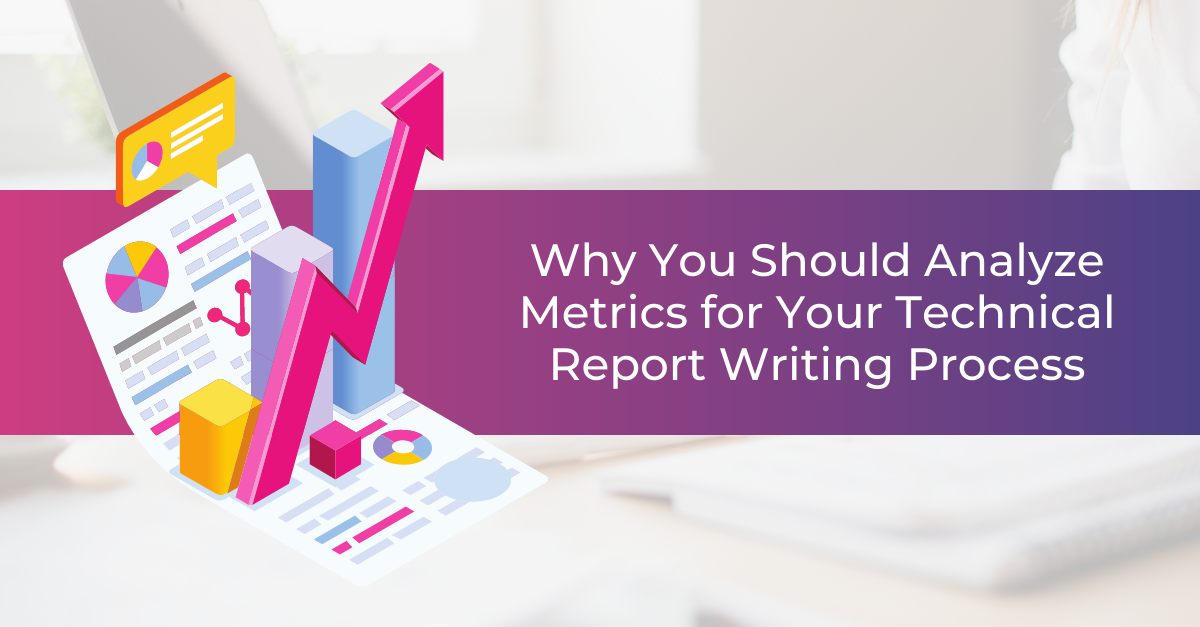Some decisions are best made spontaneously. Barring any severe allergies, an impulsive trip to get ice cream is always a solid choice. But the decisions you make for your business are rarely spur-of-the-moment.
You wouldn’t hire new people without checking their backgrounds, and you wouldn’t make a sale without wrapping your head around profit margins. Business decisions that have real-world impact require deeper thought. So why would you trust your technical report writing processes to run optimally without having adequate data to analyze them?
The Technical Report Writing Process & Your Business Goals
Report writing and editing are only part of what makes your business successful. Your bottom line depends on sales, marketing, and all the roles that help your firm run smoothly.
Still, for firms that produce high volumes of technical report deliverables, the process behind those reports can have a major impact on overall business goals. Put another way, a lack of alignment on your report writing and editing process means your people may not have the time or resources to work on new projects.
We’re sure we don’t have to tell you this, but time is money. Your writing and editing process has a direct correlation to profitability. When people take several hours to perform a task that should take minutes, you lose out on growth opportunities.
The following questions are a good starting point when analyzing metrics to discover how your processes affect business goals.
- Do your people spend too much time on specific report types or sections?
- Is everyone pulling their weight in the way you expect?
- How do your process times compare to industry standards?
- Are your processes optimized to streamline data entry so your people can focus on presenting the information clearly?
Pulling together this data can help you get your people on the right path to carry out processes as you expect and bring on more business (or keep the current momentum going).
Common Misunderstandings in the Report Writing Process
You might assume your people are doing their jobs properly because you’ve seen few issues with the quality of the reports they produce. But your report deliverables aren't just about the end result. Companies are well aware if something has been completed and delivered (late or on-time). However, the process and steps taken to get reports created, authored, finalized, and delivered are often based on assumptions and feelings rather than hard data.
It is possible to maintain quality while increasing the quantity of reports you produce. You don’t have to choose one or the other. It starts with understanding your current processes and making small changes that pack a punch in terms of efficiency.
At Quire, we’ve helped to analyze report writing processes for firms across industries, from environmental consulting to energy to accounting. In many cases—particularly when analyzing standard report types within that industry—stakeholders have been surprised at issues like these:
- Writers or reviewers overthink their part of the process and spend hours on something that could have taken minutes.
- People spend time entering data over and over again instead of finding more efficient ways to present data.
- Some reviewers have to spend too much time reviewing reports and making changes.
- Other reviewers spend too little time (or no time at all) reviewing the reports.
Typically, these firms are able to resolve the issue by resetting expectations and making sure the right people are in the best roles for them.
Writing & QA: Striking the Right Balance
So why do these misunderstandings occur in the first place?
Technical people are good at getting in the weeds and spending time in areas that don’t affect report quality. Your senior reviewers may be spending just as much time on reports as your writers—and that’s far from ideal.
If you want to ensure you strike the right balance, start setting clear expectations for each section of your report. Adding instructions into your templates can help.
From there, it’s about keeping an eye on the ratio of review time to writing time and identifying patterns. If the scales tip in an unexpected direction, you want to know about it so you can get your people realigned. Similarly, you might find that certain templates in the same service line are more labor intensive, or that reviewers are finding the most mistakes in a certain report section. This can help you identify key areas of optimization.
How Do You Acquire the Right Data to Analyze?
If your firm is using traditional word processing programs to develop reports, most of your data around the process is purely anecdotal. While you have numbers on report volume and overall production time, you’re missing key details that could clarify process and productivity.
You may have employees log their time, but that doesn’t account for all breaks and the everyday disruptions that come with the job. How can you feel confident that everyone is measuring with the same stick?
If you want to obtain useful data (that doesn’t require hovering over employees with a stopwatch), you have to change your tool. That’s where Quire comes in.
From data entry to writing to review, Quire makes the report writing process a cinch. Best of all, you get visibility into everything your team does with an easy-to-use dashboard that includes company and user statistics as well as industry benchmarks to measure your data against.
Reach out to our team to request a customized demo of the Quire platform.
